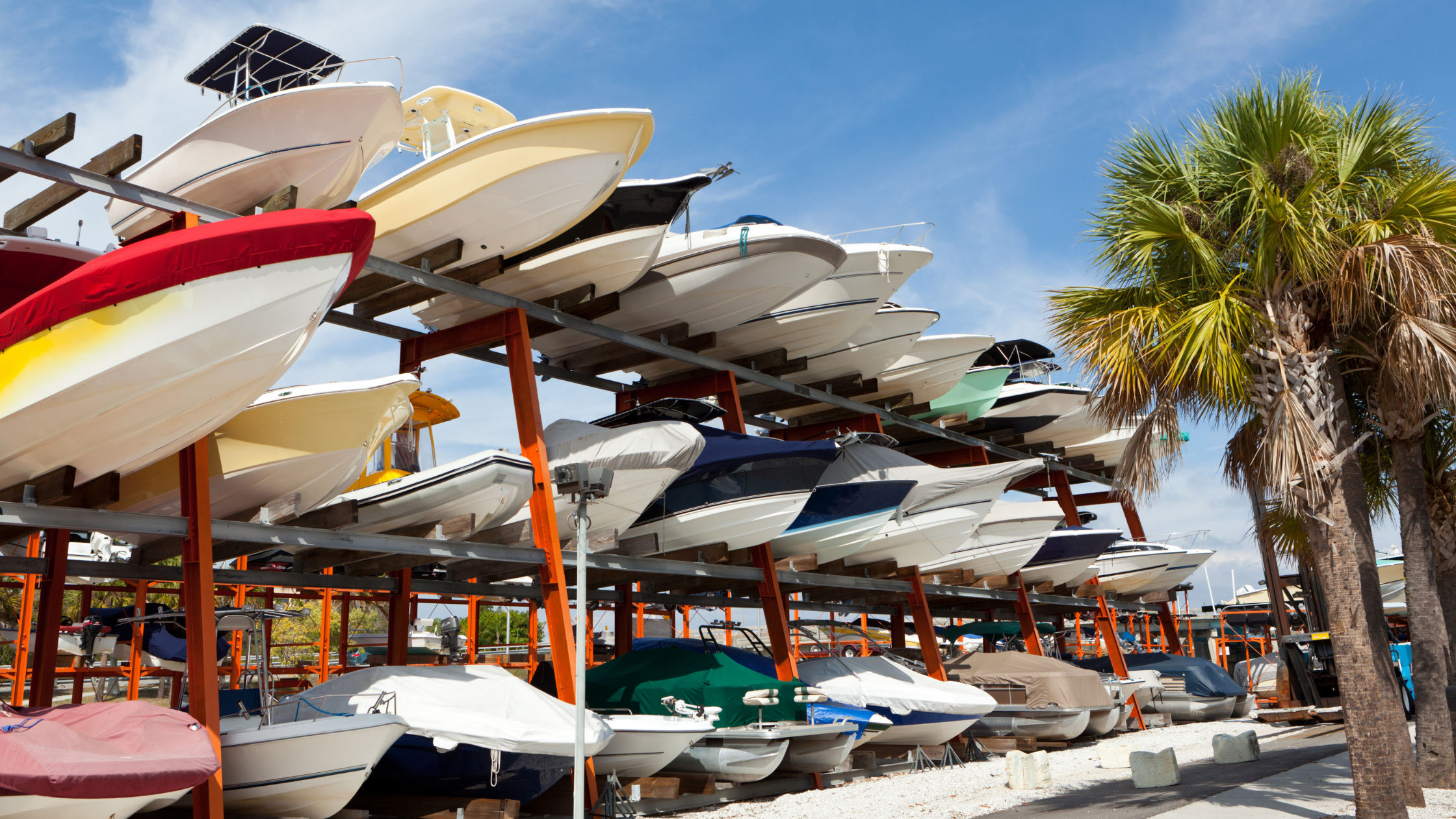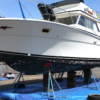
If you’re a first-time boat owner, welcome to the family! The crew at Snag-A-Slip wants to make sure you have many years of boating pleasure. That’s why we need to talk about a sensitive topic for boaters – winter storage. We never like to see our beloved boats put into storage. Even so, it must be done, and done correctly, for us to have a great start to the next boating season, ready to hit the waters! Proper winterizing protects your boat from damage from low temperatures and winter weather conditions. It keeps your boat in tip-top shape and guarantees many seasons of smooth sailing.
Storage Options
Let’s start with your storage options. You basically have three:
In-water boat storage
This option depends on what winter weather conditions are like in your geographic area. If you’re in an area that has a fairly mild winter, then this could be an option for you. It’s a good idea to speak with someone at the marina where you dock your boat to learn what they offer and recommend. The downside to leaving your boat in the water through the winter is the many risks you could face, like sinking, blisters, storm damage, and theft (if you’re not in a gated marina).
Dry outdoor boat storage
Of the three options, this is the most cost-effective. If you have a trailer and a safe place to park your boat, this could be the option for you. The downside is that leaving it out and dry without proper protection in inclement weather could damage your boat. You can avoid damage by maintaining your boat and winterizing it properly, then keeping it well protected against the elements.
Dry indoor boat storage
Dry indoor storage is considered the safest option, but it’s also the most expensive – unless you have a covered space on your own property. Indoors, your boat will be in a controlled climate without risk of damage from low temperatures, heavy snow, and high winds.
Preparing to Winterize
Get ready to store your boat by preparing for winterization. First, go ahead and take your boat out on the water for one last ride! This will allow you to observe if everything is working properly and if anything needs to be repaired, tightened or replaced. Then you’ll need to:
- – Repair all issues before winterizing and storage
- – Remove all electronics – they add weight and don’t do well with temperature fluctuation or moisture
- – Give your boat a good wash and cleaning
- – Flush your engine
Ready to Winterize
Now you’re ready to winterize. Of course, always refer to your owner’s manual for specific instructions. But here is a time-tested list to make sure you do the things that should be done:
- Change the oil and replace the filters. New oil should be added after flushing the old oil out.
- Fill the gas tank to avoid damage. Condensation can develop in an unfilled tank, damaging it as the condensation freezes in low temperatures.
- Spray fogging oil on your boat’s carburetor after you clean it, and even the spark plugs, to keep your engine’s moving parts safe.
- Flush and drain the current coolant. Then fill with new antifreeze to prevent parts from freezing.
- Flush an inboard or sterndrive engine with clean water using motor flusher water muffs. You should flush until the engine reaches the average operating temperature. Then remove the drain plugs. After that, drain the remaining water by removing the water pump hose.
- Flush an outboard engine by first making sure all drain holes are open. Then start the engine and clean the cooling system by flushing it with fresh water. Be sure to flush for a few minutes.
- Add fuel stabilizer. This step is important because it removes water and prevents corrosion and cleanses carburetors and fuel injectors.
- Drain all freshwater plumbing systems and add antifreeze.
- Drain and replace gear oil. When changing the oil, make sure there is no sign of moisture. If there is, you need to replace the seals.
- Wash and wax your boat. Give it a good cleaning inside and out, then go ahead and coat the body with wax. The wax prevents the boat’s body from rust when stored outside.
- Lubricate the steering wheel and other control devices to ensure they’ll move easily when it’s time to take your boat out of storage.
- Protect your propeller by removing the prop nut and coating it with waterproof grease.
- Protect all rubber door seals from cracking in extreme weather conditions by coating them with a rubber seal protectant.
- Loosen or take out drive belts. When kept under pressure for a long time, your belts can crack under pressure. Release that tension by removing or loosening them.
- Detach the battery. It can deplete and discharge over the winter.
- Remove organic materials, like leather, canvas and fabric, from the interior of your boat. Moisture will create mold and mildew on these items – ruining them.
Cover your boat to protect it from the elements. There are really two options: shrink wrap, typically done by a professional, or a boat cover you can purchase and put on yourself. Make sure there is adequate airflow to avoid mold. If your boat is being stored outdoors, remove snow regularly. It can become heavy and cause the cover to rip.








